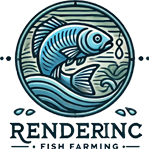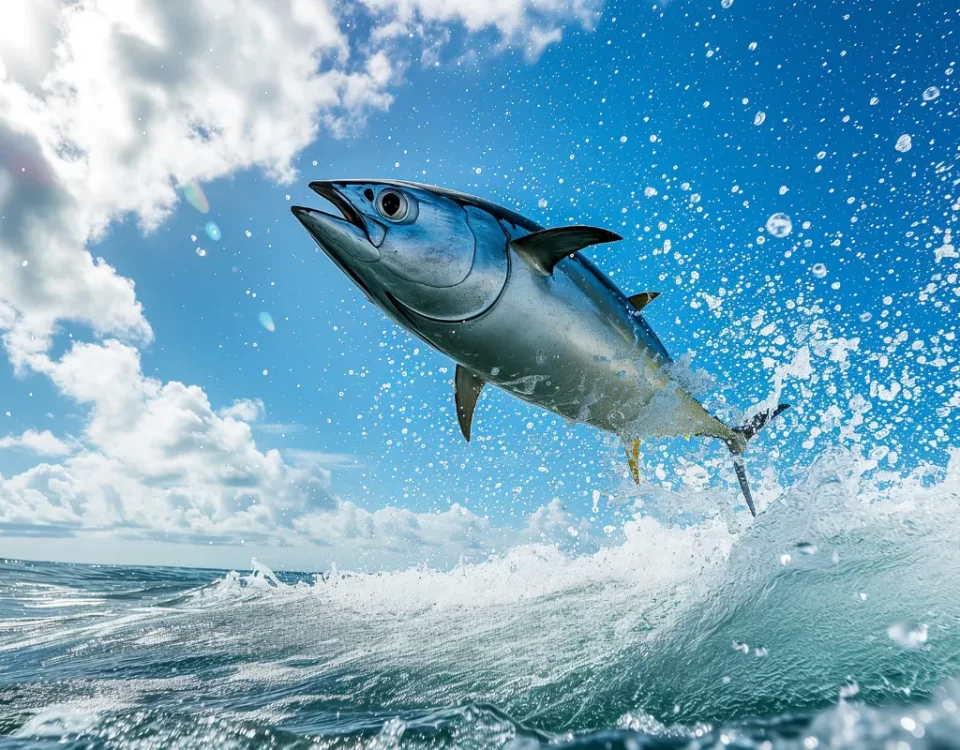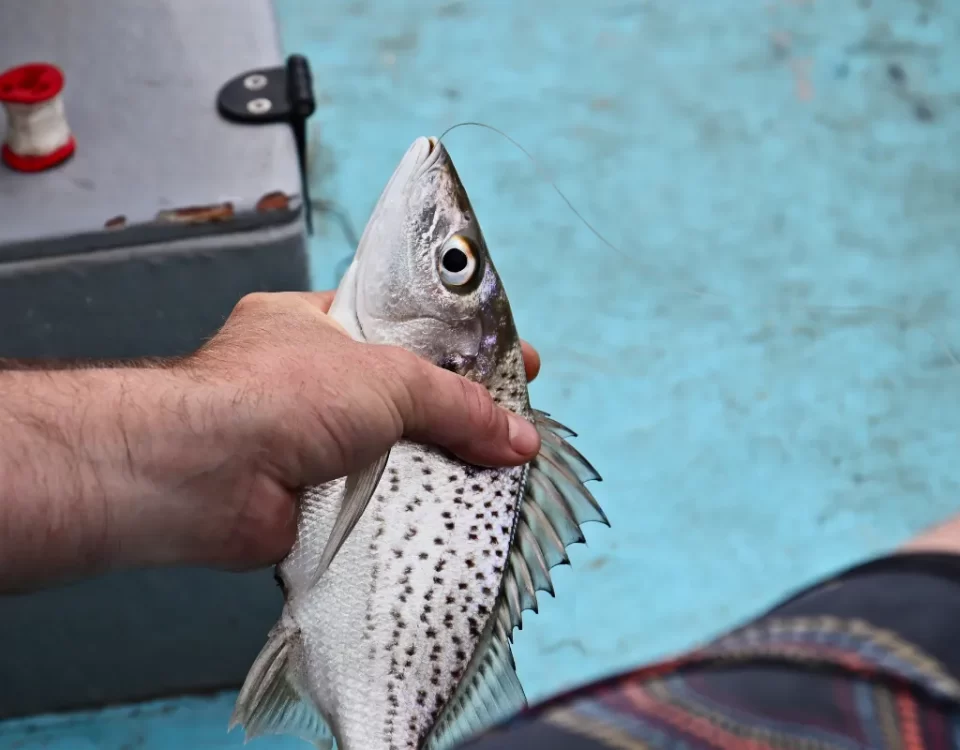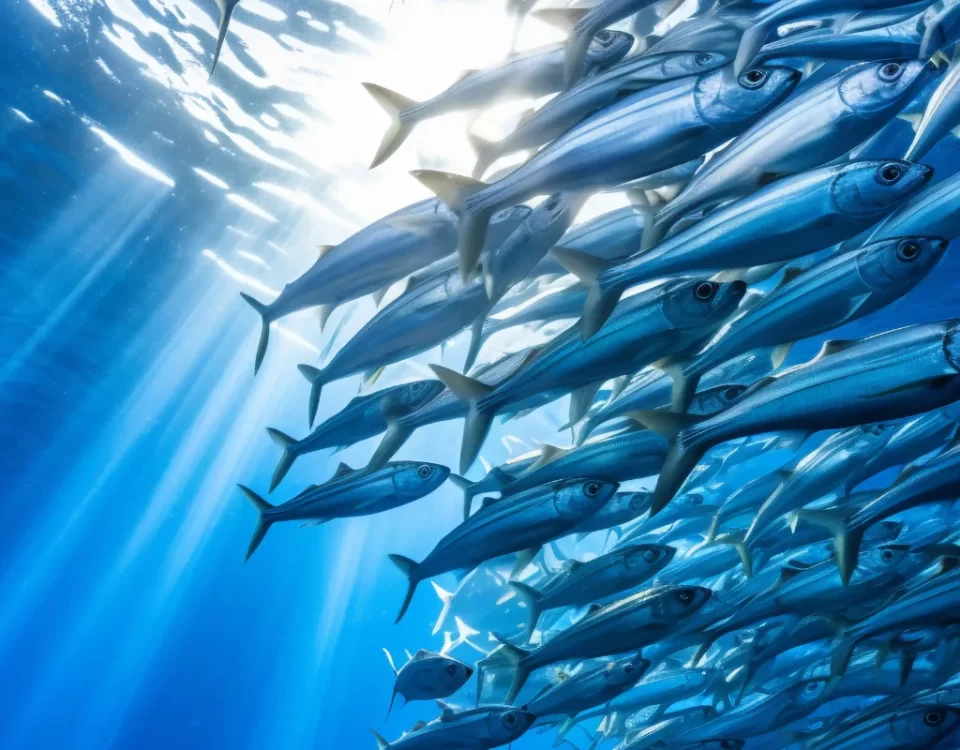Essential Equipment for Effective Aquaculture Systems

Top 10 Fish Species for Commercial Fish Farming
September 1, 2024
The Future of Sustainable Fish Farming: Trends and Innovations
September 3, 2024Aquaculture, the practice of cultivating aquatic organisms such as fish, shellfish, and plants in a controlled environment, has become increasingly vital in meeting the growing demand for seafood worldwide. As traditional fisheries face challenges such as overfishing and environmental degradation, aquaculture provides a sustainable solution to ensure a steady supply of seafood for both food security and economic growth.
The importance of having essential equipment for effective aquaculture systems cannot be understated. Just like any other agricultural practice, aquaculture requires specialized tools and technology to optimize production, ensure animal welfare, and maintain environmental sustainability. From water quality management systems to feeding mechanisms, each piece of equipment plays a crucial role in the overall success of an aquaculture operation.
In this article, we will delve into the essential equipment needed for effective aquaculture systems, highlighting the key components that contribute to the success of a fish farming operation. We will explore the purpose and benefits of each piece of equipment, discussing how they improve production efficiency and enhance the overall health and growth of aquatic organisms. By understanding the significance of investing in quality equipment, aquaculture practitioners can maximize their yields and minimize potential risks associated with poor management practices.
From water filtration systems and aeration devices to fish feeders and monitoring tools, we will provide insights into the various equipment necessary for maintaining a robust and sustainable aquaculture system. By the end of this article, readers will gain a comprehensive understanding of the essential equipment required to establish and maintain a successful fish farming venture, setting them on the path towards sustainable aquaculture practices.
The Basics of Aquaculture Systems
Aquaculture, a term stemming from the Latin words “aqua” meaning water and “cultura” meaning cultivation, is the practice of rearing aquatic organisms in controlled environments for commercial purposes. Aquaculture has evolved into a vital industry globally, providing a sustainable source of seafood to meet the growing demands of the population.
Definition of Aquaculture
In aquaculture, various aquatic organisms such as fish, shellfish, and aquatic plants are cultivated in systems that mimic their natural habitats. Aquaculture involves the farming of these species in ponds, tanks, cages, or raceways, where conditions like water quality, temperature, and feed can be managed to optimize growth. This controlled environment allows farmers to rear aquatic species efficiently, ensuring a stable and predictable supply of seafood.
Types of Aquaculture Systems
There are several types of aquaculture systems employed in the industry to rear aquatic organisms effectively. Recirculating aquaculture systems (RAS) are indoor systems that recycle and treat water, providing a controlled environment for fish farming. Pond culture involves the use of natural or man-made ponds to cultivate fish, shrimp, or mollusks on a larger scale. Cage culture utilizes submerged cages in open water bodies like lakes or oceans to rear fish or shellfish. Each system offers unique advantages and challenges, catering to the specific needs of different aquatic species.
Importance of Proper Equipment in Aquaculture
Proper equipment is essential in aquaculture systems to maintain the optimal conditions required for the health and growth of aquatic organisms. Equipment such as aerators, filters, pumps, and monitoring devices play a crucial role in ensuring water quality, temperature control, and oxygen levels within aquaculture systems. Efficient equipment helps to prevent disease outbreaks, improve feed conversion ratios, and enhance overall productivity in aquaculture operations. Investing in high-quality equipment is a strategic choice for aquaculture farmers to achieve success and sustainability in their ventures.
Water Quality Monitoring Equipment
Effective aquaculture systems rely heavily on maintaining optimal water quality for the health and growth of aquatic species. Monitoring and regulating key parameters such as pH, oxygen levels, and turbidity are crucial aspects of successful fish farming operations. To achieve this, aquaculturists must utilize a range of advanced water quality monitoring equipment to ensure a hospitable environment for their aquatic inhabitants.
Importance of Maintaining Optimal Water Quality in Aquaculture Systems
Water quality plays a pivotal role in the success of any aquaculture venture. Imbalances or fluctuations in parameters such as pH and oxygen levels can lead to stress, disease, and even mortality among the cultured species. Turbidity, which refers to the cloudiness or haziness of water caused by suspended particles, can also impact the overall health and growth of aquatic organisms. By closely monitoring these parameters, fish farmers can proactively address any issues and create a conducive environment for their stock to thrive.
Types of Water Quality Monitoring Equipment
There are several types of water quality monitoring equipment available to aquaculturists to assess and maintain the parameters critical to their operation. pH meters are essential for measuring the acidity or alkalinity of water, ensuring that it remains within the optimal range for aquatic life. Oxygen sensors are used to monitor dissolved oxygen levels, which are vital for fish respiration. Additionally, turbidity meters can help determine the clarity of water by measuring the amount of suspended particles present.
How to Use and Maintain Water Quality Monitoring Equipment
Proper operation and maintenance of water quality monitoring equipment are essential to obtain accurate and reliable data. Before use, it is crucial to calibrate the equipment according to manufacturer guidelines to ensure precision in measurements. Regular cleaning and maintenance of sensors and probes are necessary to prevent fouling and ensure consistent performance. Additionally, users should follow a routine schedule for calibration checks and sensor replacement to guarantee the equipment’s efficacy in monitoring water quality parameters.
By employing advanced water quality monitoring equipment and adhering to diligent monitoring practices, aquaculturists can safeguard the well-being of their aquatic stock and enhance the productivity of their aquaculture systems.
Filtration Systems
In the realm of aquaculture, filtration systems play a crucial role in maintaining water quality, which is paramount for the health and well-being of aquatic species. These systems serve to remove physical impurities, harmful chemicals, and excess nutrients from the water, ensuring a clean and conducive environment for fish and other aquatic organisms to thrive.
Types of Filtration Systems
Mechanical Filters
Mechanical filters are designed to physically trap solid particles and debris suspended in the water. These can include screens, sieves, and filter pads, which capture larger particles and prevent them from contaminating the aquaculture system. Regular maintenance of mechanical filters is essential to prevent clogging and ensure efficient operation.
Biological Filters
Biological filters are vital components of aquaculture systems, as they support the growth of beneficial bacteria that break down harmful ammonia and nitrites produced by fish waste. These filters typically consist of biomedia where bacteria colonize and convert toxic compounds into less harmful substances, promoting a healthy aquatic environment.
Chemical Filters
Chemical filters are employed to neutralize and remove specific contaminants from the water in aquaculture systems. These filters utilize various substances such as activated carbon to adsorb impurities like dissolved organic compounds, odors, and pigments, enhancing water quality and clarity.
Considerations When Choosing Filtration Systems
When selecting filtration systems for aquaculture, several factors must be taken into account to ensure optimal performance and efficiency. Considerations include the size of the aquaculture system, the species being cultivated, stocking density, and water flow rates. It is essential to match the filtration capacity of the system to the specific requirements of the aquatic species to maintain a stable and healthy aquatic ecosystem. Additionally, regular monitoring and maintenance of filtration systems are critical to prevent issues such as water quality deterioration and fish health problems.
Aeration Equipment
In the realm of aquaculture systems, aeration equipment plays a vital role in ensuring the optimal growth and health of aquatic organisms. Adequate oxygen levels are essential for the well-being of fish, shrimp, and other aquatic species, as they rely on dissolved oxygen in the water to survive. Insufficient oxygen can lead to stress, poor growth rates, decreased immune function, and even mortality in aquaculture systems.
Importance of Aeration in Aquaculture Systems
The primary function of aeration equipment is to introduce and distribute oxygen throughout the water column. Proper aeration helps to maintain uniform oxygen levels in the aquaculture system, preventing oxygen stratification and ensuring all aquatic organisms have access to the oxygen they need. Aeration also promotes the circulation of water, which helps in distributing essential nutrients and removing waste products from the system.
Types of Aeration Equipment
There are various types of aeration equipment available for aquaculture systems, each with its unique applications and benefits. Paddlewheel aerators are commonly used for large-scale aquaculture operations, as they can effectively agitate and aerate large volumes of water. Diffused aeration systems, on the other hand, release fine air bubbles at the bottom of the water column, promoting efficient oxygen transfer and circulation.
Proper Installation and Maintenance of Aeration Equipment
To ensure the effectiveness of aeration equipment, proper installation and maintenance are crucial. Aeration systems should be strategically placed in the aquaculture system to maximize oxygen distribution and minimize energy consumption. Regular maintenance, including cleaning filters, checking air compressors, and inspecting diffusers, is essential to prevent clogging and ensure optimal performance of the aeration equipment.
In the above markdown format, I’ve covered the importance of aeration in aquaculture systems, types of aeration equipment, and the significance of proper installation and maintenance. Let me know if you need further assistance or additional content.
Feeding Systems
In the realm of aquaculture, proper feeding plays a pivotal role in ensuring the vitality and growth of aquatic species. It’s not merely about supplying sustenance; it is about providing a balanced and nutritious diet that meets the specific dietary needs of the fish or other organisms being cultivated. Adequate feeding directly influences the health, growth, and reproduction of aquatic species, making it an indispensable aspect of aquaculture management.
Importance of Proper Feeding in Aquaculture
Proper feeding practices in aquaculture are essential for maintaining optimal biological functions within aquatic species. Insufficient or excessive feeding can lead to nutritional deficiencies, growth stunting, or environmental pollution due to uneaten feed. The right feeding regime not only promotes healthy fish but also contributes to efficient feed utilization and waste management in aquaculture systems. By focusing on well-balanced nutrition tailored to the species’ requirements, aquaculture practitioners can enhance growth rates, disease resistance, and overall profitability of their operations.
Types of Feeding Systems
Several feeding systems are available to assist aquaculturists in effectively managing the feeding process. Automatic feeders are commonly used in larger-scale operations, dispensing predetermined quantities of feed at scheduled intervals. These devices help maintain consistent feeding routines and reduce labor costs associated with manual feeding. Demand feeders, on the other hand, allow fish to access feed when needed, promoting natural feeding behavior and reducing waste. Each type of feeding system offers unique benefits, and the choice depends on the aquaculture production objectives, species requirements, and facility size.
Considerations When Selecting Feeding Systems for Aquaculture
When selecting feeding systems for aquaculture setups, several factors must be taken into account to ensure efficient feeding management. Considerations such as species-specific feeding habits, facility design, water quality, and feeding frequency must be carefully evaluated. The chosen feeding system should align with the operational goals, management practices, and overall sustainability of the aquaculture venture. Additionally, factors like cost-effectiveness, durability, and ease of maintenance play a crucial role in determining the most suitable feeding system for a particular aquaculture operation. By researching and selecting the right feeding systems, aquaculturists can maximize feed utilization efficiency and promote the well-being of their aquatic organisms.
Monitoring and Control Systems
Aquaculture is a delicate balance of environmental factors that directly impact the well-being of aquatic life being cultivated. The importance of monitoring and control systems in aquaculture cannot be overstated, as they serve as the guardians of water quality and conditions crucial for the health and growth of fish species. These systems act as vigilant overseers, constantly assessing and regulating key parameters to ensure optimal conditions within aquaculture systems.
Importance of Monitoring and Control Systems in Aquaculture
In the realm of aquaculture, precision is paramount. Monitoring and control systems play a pivotal role in maintaining stable environmental conditions such as temperature, dissolved oxygen levels, pH levels, and water flow. These systems provide real-time data and feedback, allowing aquaculturists to promptly address any deviations from the desired parameters. By closely monitoring these vital factors, operators can prevent potential crises, such as oxygen depletion or sudden temperature fluctuations, which could otherwise result in significant losses.
Types of Monitoring and Control Systems
Various types of monitoring and control systems are employed in aquaculture operations to ensure comprehensive oversight and management. Common examples include temperature controllers, which regulate water temperature to create an optimal habitat for aquatic species, and oxygen controllers, which monitor and adjust oxygen levels to sustain fish health. Furthermore, alarm systems are crucial components that promptly alert operators to any irregularities or system malfunctions, enabling swift corrective actions to be taken.
Benefits of Integrating Monitoring and Control Systems in Aquaculture Operations
The seamless integration of monitoring and control systems in aquaculture operations yields a multitude of benefits. By maintaining optimal environmental conditions, these systems contribute to enhanced fish health and growth rates, ultimately leading to improved productivity and profitability. Moreover, the automation and precision afforded by these systems reduce the margin for human error and enable aquaculturists to focus on strategic decision-making and overall management, thereby increasing operational efficiency and effectiveness.
Through the strategic deployment of monitoring and control systems, aquaculture endeavors can navigate the complexities of environmental dynamics with finesse and foresight, safeguarding the delicate balance required for successful fish farming practices.
Harvesting Equipment
Efficient harvesting is a crucial aspect of any successful aquaculture operation. Proper harvesting not only ensures the timely removal of fish from the aquaculture system but also plays a significant role in maintaining fish health and minimizing stress. The correct harvesting equipment and techniques can make a substantial difference in the overall productivity and profitability of an aquaculture farm.
Importance of Efficient Harvesting in Aquaculture Systems
In an aquaculture system, harvesting serves as the culmination of careful nurturing and cultivation of fish. Fish ready for harvest represent the harvest of time, effort, and resources invested in their growth. Efficient harvesting ensures that fish are collected promptly at their peak condition, maximizing quality and market value. Moreover, timely harvesting prevents overcrowding and maintains optimal stocking densities, promoting healthy growth and reducing the risk of disease outbreaks.
Types of Harvesting Equipment
- Dip Nets: Dip nets are commonly used for harvesting small quantities of fish in aquaculture systems. They are versatile and easy to use, allowing farmers to selectively harvest specific fish without causing disruption to the entire population.
- Seines: Seines are larger nets that can be deployed to capture fish in ponds or cages. They are particularly useful for harvesting a larger number of fish efficiently. Seines are available in various sizes to accommodate different aquaculture setups.
- Harvest Pumps: Harvest pumps are mechanical devices that can be used to suction fish from aquaculture tanks or ponds. They offer a quick and efficient way to harvest fish in large-scale operations. Harvest pumps are especially beneficial for harvesting delicate species with minimal stress.
Proper Techniques for Using Harvesting Equipment
When utilizing harvesting equipment, it is essential to handle fish with care to minimize stress and injury. Farmers should avoid rough handling or overcrowding during harvesting to maintain fish integrity and quality. Proper training on the operation of specific harvesting equipment is crucial to ensure efficient and effective harvesting practices.
The selection of harvesting equipment should be based on the aquaculture system size, fish species, and harvesting frequency. Regular maintenance and inspection of harvesting equipment are necessary to ensure optimal performance and longevity. By investing in high-quality harvesting equipment and adopting best practices, aquaculture farmers can streamline their harvesting operations and enhance overall productivity.
Recap of Essential Equipment for Effective Aquaculture Systems
In the realm of aquaculture, the equipment utilized is as crucial as the aquatic life being cultivated. To ensure a thriving operation, aquaculturists must equip themselves with the necessary tools and technology. Ph meters and oxygen testing equipment are essential for monitoring water quality, ensuring an optimal environment for the aquatic species. Filtration systems, including mechanical, biological, and chemical filters, play a vital role in maintaining water clarity and purity. Aeration devices such as air stones or diffusers help to oxygenate the water, vital for the well-being of the aquatic inhabitants.
Importance of Investing in Quality Equipment for Successful Aquaculture Operations
The adage “you get what you pay for” rings especially true in the realm of aquaculture. Investing in high-quality equipment is not just a matter of preference; it is a necessity for ensuring the success and sustainability of aquaculture operations. Subpar equipment can lead to poor water quality, inadequate living conditions for the aquatic species, and ultimately, decreased productivity. By choosing premium equipment from reputable suppliers, aquaculturists can safeguard their investment and pave the way for a flourishing aquaculture enterprise.
Final Thoughts and Encouragement for Aspiring Aquaculturists
To all the aspiring aquaculturists embarking on this rewarding journey, remember that dedication and perseverance are key virtues in this field. Embrace the challenges and setbacks as opportunities for growth and learning. Surround yourself with knowledgeable mentors and fellow enthusiasts who can offer guidance and support along the way. Stay curious, stay innovative, and never lose sight of your vision for a sustainable and prosperous aquaculture venture.
In the realm of aquaculture, where science meets art and nature, the right equipment can make all the difference between mediocrity and magnificence. By arming yourself with the essential tools and understanding their significance, you are laying the foundation for a successful and fulfilling aquaculture endeavor. So, go forth with confidence, armed with knowledge and determination, and navigate the intricate waters of aquaculture with grace and purpose. The world beneath the surface awaits your stewardship.

Michael Rivers is an experienced aquaculture enthusiast with over a decade of hands-on knowledge in fish farming and sustainable aquatic systems. Passionate about promoting eco-friendly practices, he shares his expertise on fish breeding, water management, and the latest advancements in aquaculture technology. Through his blog, Michael aims to help both beginners and seasoned fish farmers achieve success in their ventures while contributing to the growth of sustainable food production.




